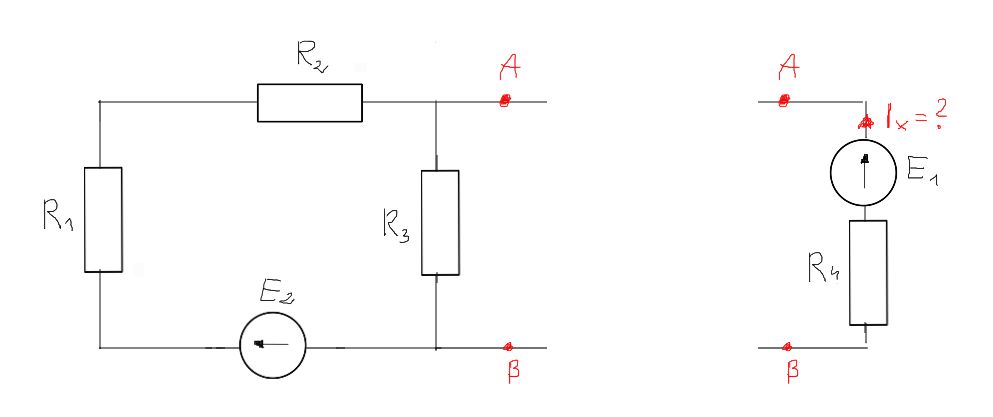Edupanda » Circuit Theory » Thevenin's Theorem
Thevenin's Method / Theorem

Thevenin's theorem, also known as the theorem of the equivalent voltage source, may sound complicated at first, but its use will prove to be very simple when we see it in action.
We won't go too deep into the theory behind this theorem, in a considerable simplification, it states that:
A stationary, linear and concentrative electric circuit can be replaced by a circuit composed of an ideal voltage source (Thevenin source) and an impedance (resistor in direct current circuits).
Importantly, this method is used to calculate the current in a single branch of the circuit, so it is great for verifying calculations made by other methods, and it also facilitates many more advanced issues.
The steps of the method:
- Disconnect the branch from the circuit for which we want to calculate the current
- Calculate for the rest of the circuit:
- The voltage of the Thevenin source
- The equivalent impedance (compare -> equivalent resistance)
- Connect these elements to the branch in question and calculate the current in that branch

Example 1
Text
Using Thevenin's method, determine the current \(I_x\)

Data: \(R_1=10 \Omega, R_2=20 \Omega, R_3=30 \Omega, R_4=20 \Omega, E_1=130 V, E_2=120 V\)
Solution
Step 1 - Disconnect the branch from the circuit for which we want to calculate the current

Step 2 - Calculate the voltage of the Thevenin source for the rest of the circuit
 $$
\begin{aligned}
&I=\frac{E_2}{R_1+R_2+R_3}=2A\\
&E_T=-I \cdot R_3=-60V
\end{aligned}
$$
$$
\begin{aligned}
&I=\frac{E_2}{R_1+R_2+R_3}=2A\\
&E_T=-I \cdot R_3=-60V
\end{aligned}
$$
Step 3 - Calculate the equivalent impedance (resistance)
 $$R_T=\frac{\left(R_1+R_2\right) \cdot R_3}{R_1+R_2+R_3}=15\Omega$$
$$R_T=\frac{\left(R_1+R_2\right) \cdot R_3}{R_1+R_2+R_3}=15\Omega$$
Step 4 - Connect these elements to the branch in question and calculate the current in that branch
 $$I_x=\frac{E_1+E_T}{R_T+R_4}=2A$$
$$I_x=\frac{E_1+E_T}{R_T+R_4}=2A$$